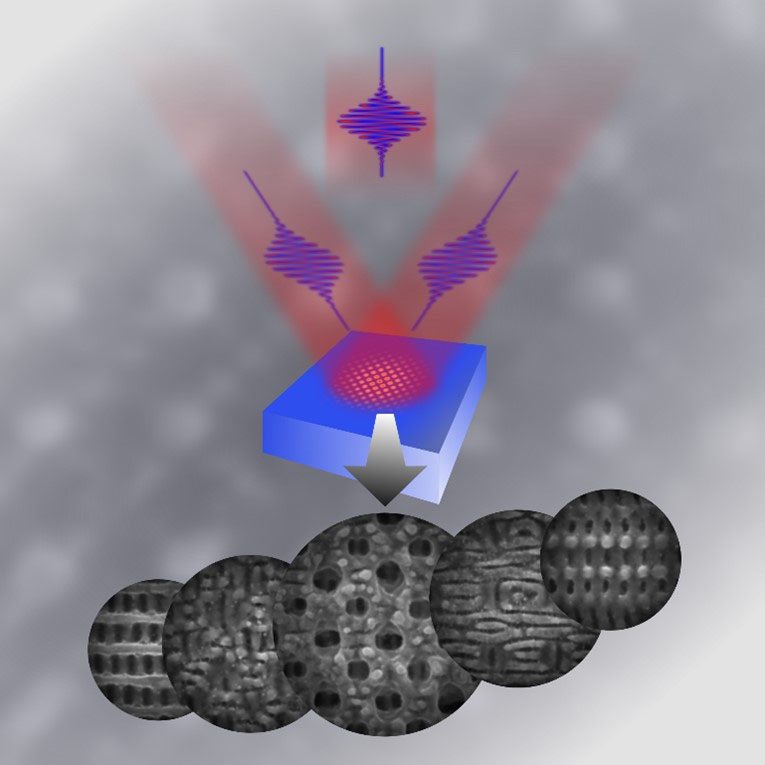| Apr 07, 2022 |
Fabricating complex hierarchical biomimetic patterns with the use of novel spatiotemporally tailored interfering laser beams
(Nanowerk News) Nature provides an abundance of functional surfaces as a direct consequence of evolutionary pressure that forces them to demonstrate adaptation to environmental conditions and outstanding performance.
|
|
Fabricated patterns of enhanced complexity of micro- and nanometer length scales can emulate the impressive bioinspired performance and functionalities in various applications fields in technology and life sciences.
|
|
Direct Laser Interference Patterning (DLIP), a recently introduced laser-based fabrication methodology, has the capability to tailor the features of a surface topography and form a broad range of surface structures.
|
|
The method used in this work aims to employ spatially controlled temporarily separated coherent femtosecond pulses to regulate the hydrodynamic microfluidic motion of a molten material that is produced from the intense laser sources.
|
 |
| Generation of complex biomimetic topographies with the use of temporarily separated coherent ultrashort laser beams. (Image courtesy of the researchers)
|
|
Experimental results interpreted through a rigorous physical modeling approach demonstrate that the contribution of the microfluidic phenomena is important to determine the features of the induced topographies.
|
|
The capability to generate a wealth of complex high-resolution topographies by design through appropriate tuning of the laser characteristics and irradiation schemes could dictate an innovative methodology towards fabricating application-based biomimetic patterns.
|
|
Researchers Dr Fotis Fraggelakis, Dr George D. Tsibidis and Dr Emmanuel Stratakis, members of the Ultrafast Laser Micro- and Nano- Processing Laboratory (Stratakis’ Lab) at the Institute of Electronic Structure and Laser at FORTH-Hellas reported a novel approach for tailoring the laser induced surface topography upon femtosecond (fs) pulsed laser irradiation and the use of DLIP (Opto-Electronic Advances, "Ultrashort pulsed laser induced complex surface structures generated by tailoring the melt hydrodynamics").
|
|
Experiments and simulations presented in this report emphasized the capability to actively tailor the microfluidic melt motion that dominates the structure formation process, via controlling the applied temperature gradient’s temporal profile.
|
|
The investigation indicated that combining Gaussian beams with DLIP in double pulse trains enables the generation of unique sub-micron surface topographies with increased complexity.
|
|
The unique irradiation schemes that are examined in this work and the capability to generate novel complex morphologies in multiple length scales offers great potential for exciting emerging avenues for innovation and exploitation in the photonics industry.
|
|
This demonstrates an unparalleled capacity towards tailoring laser-induced morphology and obtaining complex topographies for a variety of applications.
|

